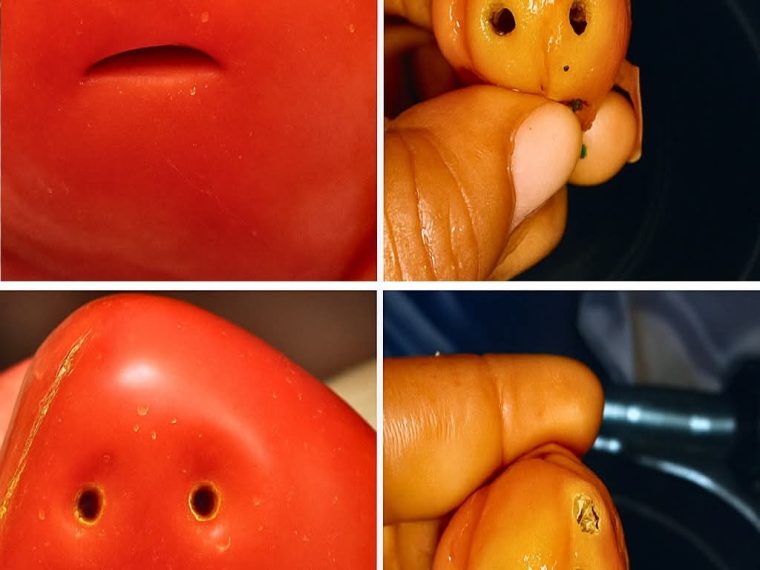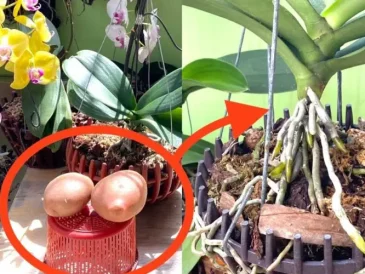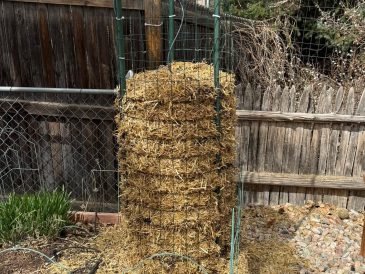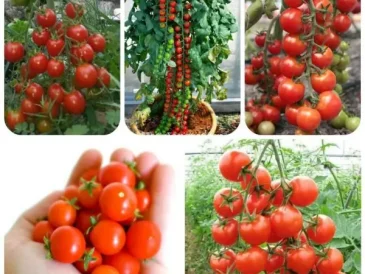Holes in Your Tomatoes …Here’s What They Really Mean
There’s nothing quite like growing your own tomatoes. You’ve watered, pruned, and patiently waited for those juicy reds to ripen—only to walk out one morning and find… holes. Tiny ones. Big ones. Maybe just a peck here or a bite there. Either way, it’s frustrating.
But before you toss your harvest into the compost pile, take a deep breath: a tomato with a hole isn’t always a lost cause. In many cases, you can still salvage your crop, prevent future damage, and maybe even learn a few new tricks for next season.
Let’s dig into what causes holes in tomatoes—and what you can do about it.
Why Do Tomatoes Get Holes?
Tomatoes are tender, juicy, and wildly appealing—to people and pests. Holes in your fruit are usually the work of one (or more) of these common culprits:
Insects & Pests
Tomato hornworms, beetles, caterpillars, and other bugs love feasting on ripe tomatoes. They often leave behind round holes, chew marks, or signs of tunneling.
Birds & Wildlife
Birds see ripe tomatoes as natural juice boxes. Their pecks can leave sharp, shallow holes. Squirrels and other small animals may also take a few bites—often just enough to ruin the fruit.
Physical or Environmental Damage
Heavy rain, rough handling, or accidentally nicking fruit with garden tools can damage the skin. These small injuries can invite rot, mold, or more pests.
Can You Still Eat a Tomato with a Hole?
Short answer: sometimes, yes!
If the hole is small and the surrounding flesh is firm, fresh, and clean, you can usually cut away the damaged part and enjoy the rest—especially in cooked dishes like soups, sauces, or stir-fries where appearance doesn’t matter.
✅ Safe to Eat If:
- The inside is firm and bright red (or the expected ripeness color)
- There’s no mold, discoloration, or funky smell
- Only a small portion is affected
❌ Toss It If:
- The area around the hole is black, mushy, or moldy
- There’s visible rot or insect activity inside
- It smells sour or “off” when you cut into it
When in doubt, throw it out. Food safety always comes first.
What to Do With Damaged Tomatoes
Don’t be too quick to call it a loss. Damaged tomatoes can often be reused, recycled, or repurposed. Here are a few simple ways to make the most of them:
1. Cut and Use the Good Parts
Trim the damaged section with a clean knife and use the rest in:
- Pasta sauce
- Chili or stew
- Salsa or tomato soup
- Homemade pizza sauce
2. Compost the Unsalvageable Ones
If it’s too far gone, let nature do the work. Add it to your compost pile—your plants next season will thank you for the nutrient boost.
3. Save the Seeds
Got a tomato that’s partially damaged but still healthy inside? Scoop out the seeds, rinse, dry, and save them. You’ll have a head start on next year’s crop—with homegrown, organic seeds.
How to Prevent Holes in Future Tomatoes
While there’s no 100% guaranteed method to keep every pest away, a few proactive steps can dramatically reduce damage:
Inspect Plants Often
Check leaves, stems, and fruit regularly for signs of pests. Hand-pick hornworms or beetles as soon as you spot them.
Promote Healthy Growth
Healthy plants resist pests better. Give your tomatoes enough space, sun, water, and nutrients to thrive.
Use Natural Defenses
- Introduce beneficial insects (like ladybugs) to your garden
- Use row covers or netting to protect from birds
- Try natural pest deterrents like neem oil or garlic spray
Final Thoughts: Don’t Judge a Tomato by Its Skin
Yes, finding holes in your tomatoes can be disappointing—but it doesn’t always mean disaster. A little damage doesn’t cancel out weeks of hard work. With smart inspection, a sharp knife, and a good compost bin, you can still salvage your harvest and protect future crops.
Remember: the “ugliest” tomatoes are often the tastiest. Don’t be afraid to embrace imperfect produce—it’s all part of the garden life.




